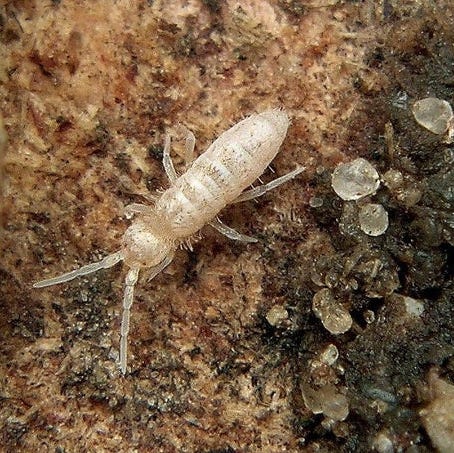- Despite being hard to place, there’s a clear source for that unmistakable smell of spring: geosmin, an organic compound commonly found in soil
- Scientists in the U.K. and Sweden discovered the springtime smell has passed the test of time due to a symbiotic relationship between the soil bacteria Streptomyces and six-legged creatures known as springtails.
- In April 2020, the researchers published their work in the journal Nature Microbiology.
The start of spring has an unmistakable, yet unplaceable smell. It’s a bit reminiscent of dirt, but there’s something else beneath the surface, evocative of rainy days or afternoons spent gardening.
The secret? Geosmin, the soil-based compound responsible for those hard-to-describe olfactory sensations. Our noses are so finely attuned to the organic compound, in fact, that we can detect it better than sharks can recognize blood.
For the first time, scientists at the Swedish University of Agricultural Sciences, the John Innes Centre, and Lund University have identified why this distinct scent has persisted: a symbiotic relationship between a six-legged worm, known as the springtail, and Streptomyces, a type of bacteria commonly found in soil.
“In field experiments, springtails were attracted to odours emitted by Streptomyces colonies,” the authors say in their paper, which appeared in the journal Nature Microbiology in 2020.
Streptomyces, for its part, produces organic compounds used in everything from chemical weapons to antibiotics. It also produces geosmin and other volatile organic compounds (VOCs) that easily become gases or vapors.
“The fact that [Streptomyces] make geosmin suggested that it confers a selective advantage on the bacteria, otherwise they wouldn’t do it,” Mark Buttner, one of the authors of the study, said in a prepared statement at the time. “So, we suspected they were signaling to something and the most obvious thing would be some animal or insect that might help distribute the Streptomyces spores.”
To test that hypothesis, researchers in Sweden laid out two sets of traps: one set baited with Streptomyces, and the other with control substances. At first blush, the scientists noticed that springtails were attracted to the Streptomyces bait, but wanted to conduct further testing.
Then, researchers placed the springtails inside a Y-tube—one by one, to avoid herd behavior—to see if they followed the scent of geosmin. And in a third set of tests, the team placed minuscule electrodes into the springtails’ antennae, watching their responses to a series of different molecules.
In each case, the lab came to the same result: springtails are attracted to the smell of geosmin and another Streptomyces-produced compound called 2-methylisoborneol (2-MIB).
It turns out geosmin and 2-MIB serve as chemical signals, escorting springtails toward Streptomyces to use the bacteria as a food source, despite the fact it routinely kills off fruit flies and nematodes. Springtails, which branched off from the insects about half a billion years ago, host a slew of enzymes that detoxify any Streptomyces antibiotics.
In exchange for the food supply, springtails help out Streptomyces by distributing its spores, which can stick to their bodies and later fall off, or spread through poop.
“This is analogous to birds eating the fruits of plants,” Buttner said. “They get food but they also distribute the seeds, which benefits the plants.” Scientists previously thought Streptomyces spread through wind and water.
It’s an example of symbiosis that’s passed the test of time—to the tune of 450 million years. So after the next spring rain, when the worms break through the earth and your nostrils pick up on that heady soil smell, you can thank the springtails and Streptomyces, continuing their ancient dance.
Before joining Pop Mech, Courtney was the technology reporter at her hometown newspaper, the Pittsburgh Post-Gazette. She is a graduate of the University of Pittsburgh, where she studied English and economics. Her favorite topics include, but are not limited to: the giant squid, punk rock, and robotics. She lives in Philadelphia with her husband, her black cat, and towers upon towers of books.













